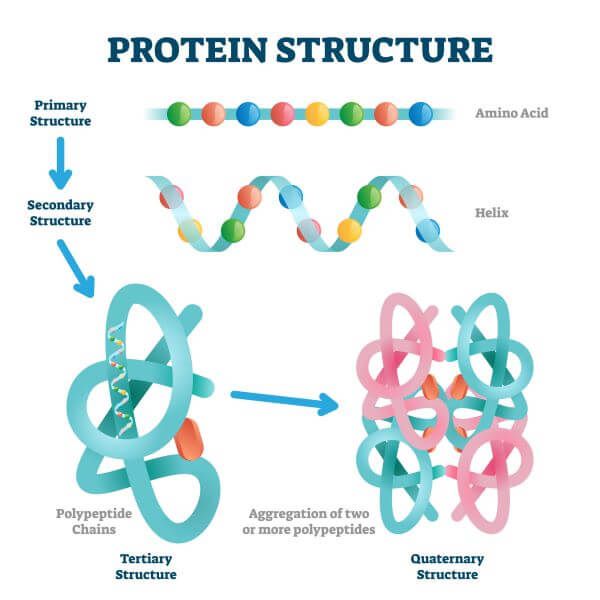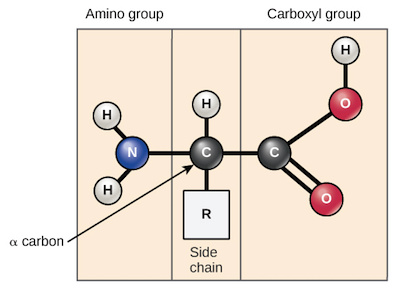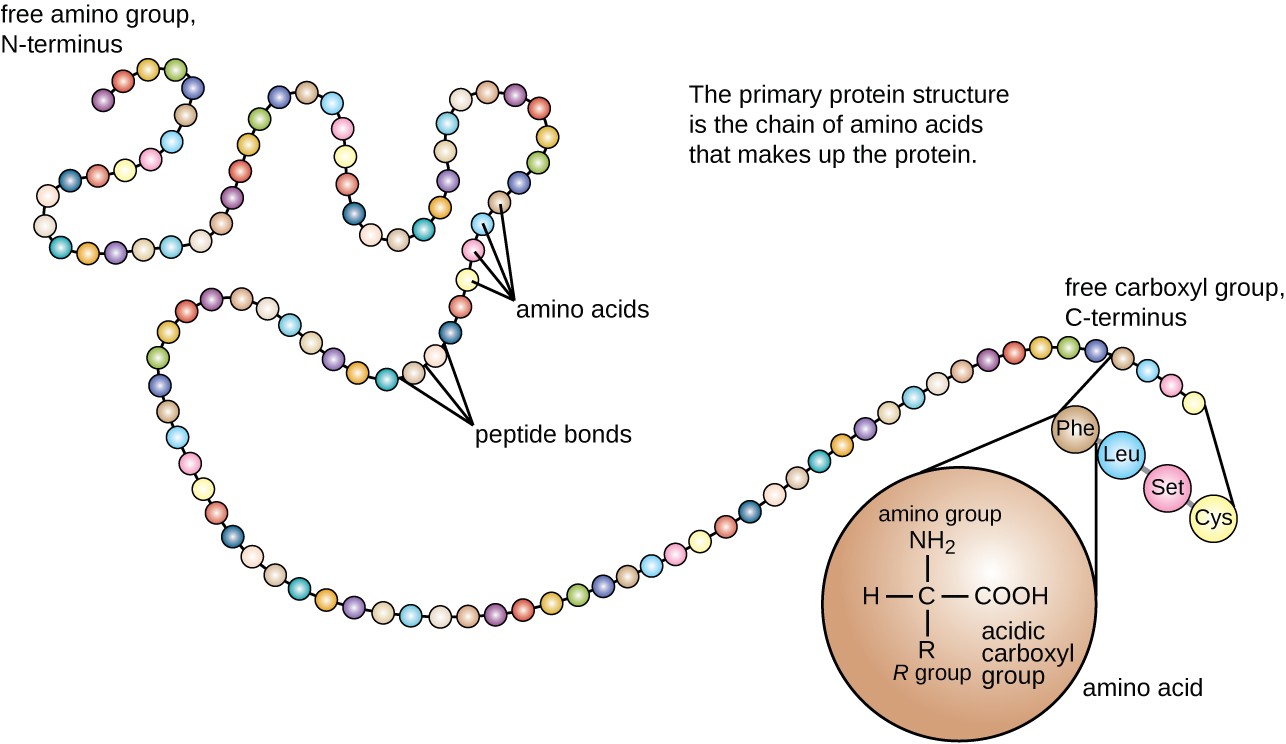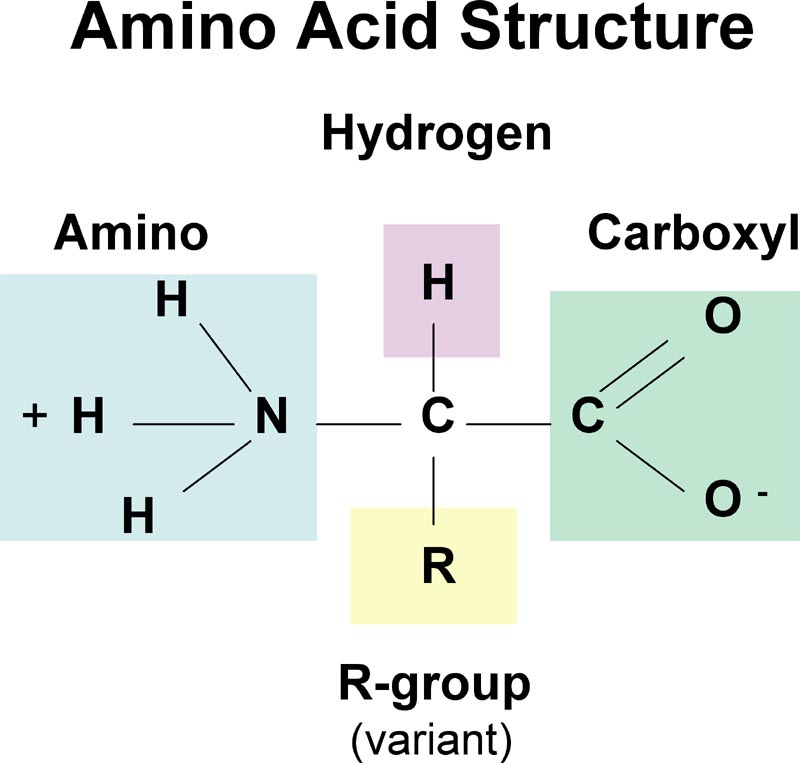Describe the Structure of Amino Acids and Proteins
Primary Structure describes the unique order in which amino acids are linked together to form a protein. At the center of each amino acid is a carbon called the and attached to it are four groups a hydrogen a carboxylic acid.

Protein Structure Biology Dictionary
A central carbon atom C A hydrogen atom H A carboxyl group COOH An.

. All proteins are made up of different arrangements of the same 20 amino acids. Their structure consists of three main groups as seen in Figure 1 namely the amino group or N terminus. Each amino acid has the same fundamental structure which consists of a central carbon atom also.
Each amino acid has the same fundamental structure which consists of a central carbon atom bonded to an amino group NH2 a carboxyl group COOH a hydrogen atom and a variable R group Figure 35. Contain an a-amino group and also an a-carboxyl group. Image of an amino acid indicating the amino group carboxyl group alpha carbon and R group.
Below are two illustrations depicting the relationship between amino acids and polypeptides. As we mentioned in the last article on proteins and amino acids the shape of a protein is very important to its function. Proteins are therefore also known as polypeptides.
There are 20 naturally occurring amino acids and all have common structural. There are four levels of protein structure. We review their content and use your feedback to keep the quality high.
The primary structure is the order of amino acids in the peptide. A protein molecule is made from a long chain of these amino acids each linked to its neighbor through a covalent peptide bond. Proteins are constructed from a set of 20 amino acids.
Amino acids are the monomers that make up proteins. To understand how a protein gets its final shape or conformation we. Each amino acid is composed of an amino group NH2 a carboxylic acid group COOH and a functional group R.
Structure of an Amino Acid. COOH H2N C H R. Amino acids are known to contain amine and carboxyl.
Amino acids are the building blocks of protein and proteins are in turn the building blocks of our muscles cartilage bones skin. Amino acids are the basic building blocks of proteins. Each peptidyl CO is hydrogen bonded to the H-N group four.
Alpha-helices are rod shaped spirals where the polypeptide chain winds tightly in a clockwise direction right-handed coil. Secondary structure is the folding of the polypeptide chain due to hydrogen bonding. Each amino acid has the same fundamental structure which consists of a central carbon atom also known as the alpha α.
There are 20 commonly found amino acids in the cell. The general formula of an amino acid is R-CH NH 2 -COOH. Amino acids share a basic structure which consists of a.
A protein is a folded polymer structure which contains a polypeptide chain polymer which. The structure of an amino acid consists of. Amino acids are the monomers that make up proteins.
The general structure of Amino acids is H2NCH RCOOH and it can be written as. There are twenty kinds of R groups that distinguish each different amino. The a-carbon is carbon 2 the carboxyl carbon is 1 Have a chiral center and are optically active with exception of glycine L-amino.
All amino acids have the same basic structure shown in Figure 21. Amino acids are organic compounds that combine to form proteins. An amino acid is nothing but a methane which is substituted by different groupsThe central carbon has a.
Amino acids are the monomers that makeup proteins. Each amino acid has the same fundamental structure which consists of a central carbon atom also known as the alpha α. While there are many different amino acids in nature our proteins are formed from twenty amino acids.
From a structural perspective amino acids are typically composed of a.

Introduction To Proteins And Amino Acids Article Khan Academy



No comments for "Describe the Structure of Amino Acids and Proteins"
Post a Comment